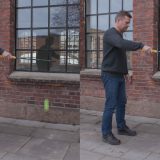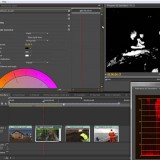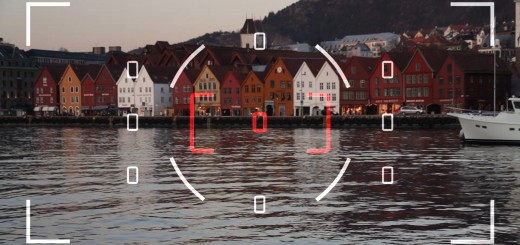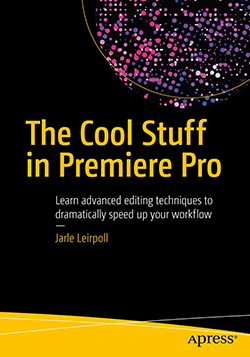Advanced Curves Techniques for Video Editors

I was asked to write an article for blog.frame.io about Advanced Curves Techniques. I decided to include some of my favorite techniques, like Easy White and Black Levels Balancing, Preparing Textures for Use as Mattes, Fast and Easy Shot Matching, Fixing a Dull Sky, and some useful Curves Presets.
You can read the section on Preparing Curves for Use as Mattes below. For the full article, visit the Frame.io Blog.
Prepare Textures for use as Mattes
I use textures a lot, especially as mattes to roughen up text, logos and other graphics. Curves are perfect for adjusting the black level, white levels and midtone contrast in the mattes. Other tools, like Levels, give you less control over midtone contrast, where the partial transparency lives. With Curves you get granular control over midtone contrast. You can use soft curves, steep curves and S-curves, so the results are much better.


A concrete wall with some text, but the text doesn’t look at all like it’s painted on the wall.
Let’s do a quick change in the timeline. I’ve copied the concrete wall image to video track 3 and adjusted it with curves. I also put a Track Matte Key on the text layer, and changed the blending mode to Overlay.

This is how my timeline looks now. I’ve named the effects I used on the two upper layers.
I used the Hue/Saturation curve to desaturate the concrete wall image, and the white curve in RGB Curves to increase contrast a lot. The desaturation isn’t really necessary, but I find it much easier to visually evaluate a matte when the colors are gone.

Using the curves, I’ve desaturated the image and increased the contrast a lot, making it a perfect matte.
Next, I changed some settings in the Track Matte Key effect. I set it to take the matte from video track 3, and to use the Matte Luma. I also activated the “Reverse” checkbox, to invert the matte. The result is that the text is only visible where the concrete wall image is dark. Now it looks like it’s been painted on the wall a long time ago.

The text is only visible where the matte layer is dark. The “paint” is still there in the dark holes in the concrete, but not on the lighter parts of the surface. Not a bad illusion!
By changing the curve while looking at the final result, I can make the text as aged and worn as I want.

Here, I went for a darker matte, using a very steep S-curve.

The result after the new curves adjustment. Since the matte was made darker, more of the “paint” remains.
As you can see, the curves make it super-easy to adjust the look and feel of this effect.
Since I like to keep my mattes black and white, even though the colors don’t really matter for the effect, I’ve made a Lumetri preset in Premiere that removes the colors and increases contrast. It’s just a preset, so everything can be tweaked from there. But using a preset takes me faster to my goal.
(You can download my 100+ presets for free here)
End of excerpt from article. To read the full article and learn more advanced techniques with Curves, visit the Frame.io Blog.
You might also like my other article on their blog: How to Use and Read the Four Primary Video Scopes.

























Great tip. I wish Premiere Pro and After Effects had the ability to blend layers like Photoshop’s (“this/that” layer option) without the extra step of creating a track matte.
I’m not familiar with the “this/that” layer option in Photoshop. We have blending modes and masks in Premiere, and I’m quite happy with that workflow.